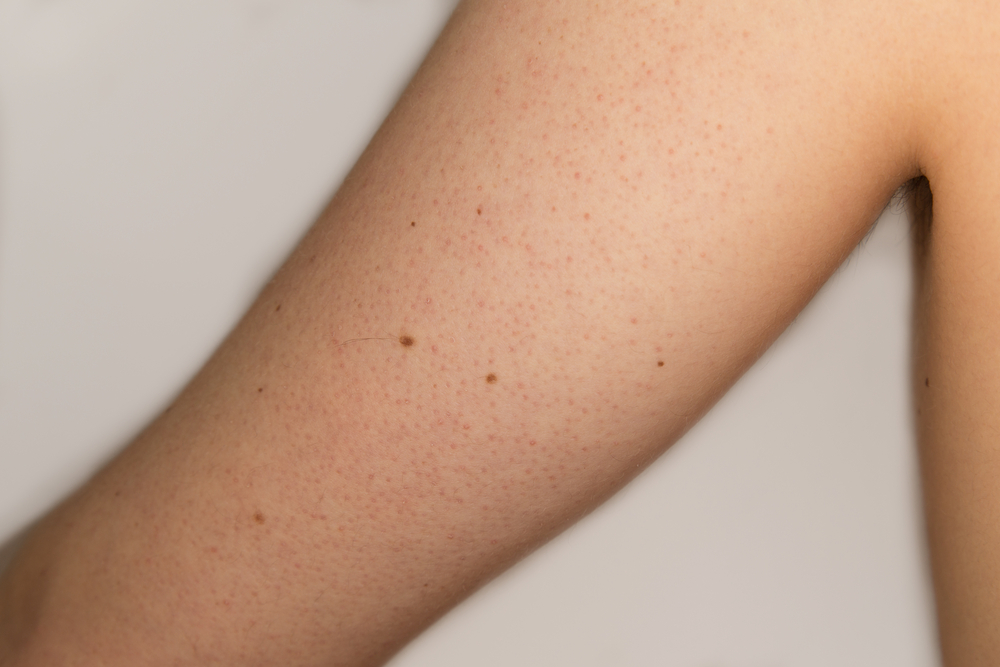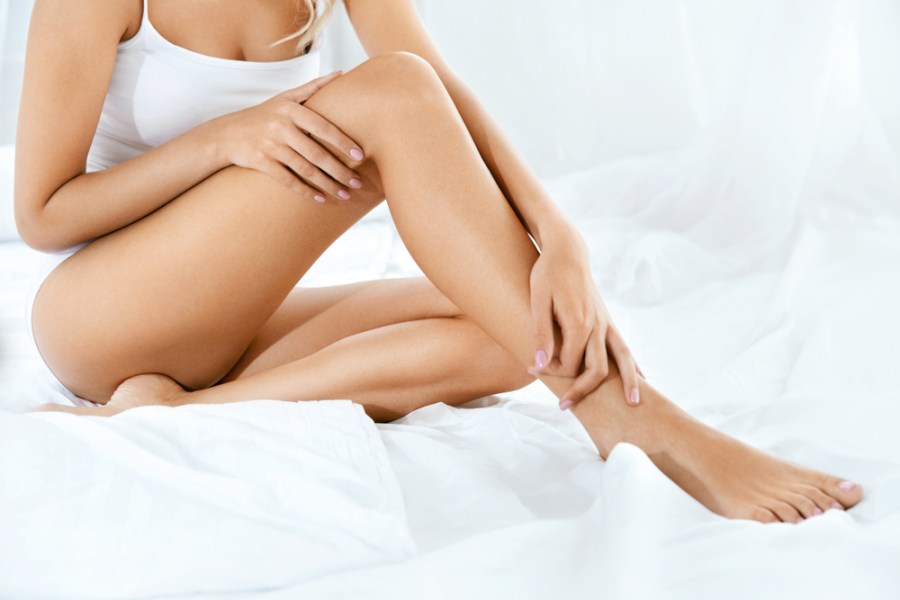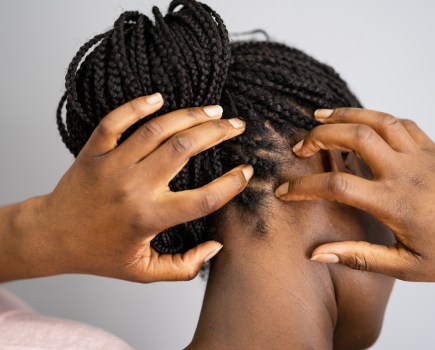Don’t let chicken skin make you feel self-conscious – here’s how to say goodbye to those annoying bumps on your arms, thighs and other areas
It might sound pretty serious, but keratosis pilaris, more commonly known as ‘chicken skin’, is a harmless condition. However, that doesn’t stop it being annoying for the 40 per cent of us who, according to the British Association of Dermatologists, have it. If you’re all too familiar with the chicken skin look, you’ll know that you’re most likely to see it on upper arms, fronts of thighs and, possibly also on the buttocks and lower back – all places where your skin tends to be drier.
Do I have keratosis pilaris?

‘Resembling permanent goose pimples, these small bumps can either be red or white in appearance,’ says Dr Mervyn Patterson, cosmetic doctor and founder at Woodford Medical (woodfordmedical.com). As the name suggests, ‘keratosis’ means too much keratin. ‘The raised bumps are caused by small keratin blockages in the entrance to the hair follicles, which is why you get that rough coarseness of the skin,’ explains Dr Patterson. ‘It has a strong family history, and there’s probably a one in two chance of you developing it if one of your parents has it.’
 Will my keratosis pilaris go away?
Will my keratosis pilaris go away?
The good news is that keratosis pilaris does improve with age – although there are a few exceptions. ‘Hormonal fluctuations, such as with pregnancy, menopause and the use of HRT can all exacerbate keratosis pilaris,’ says Dr Patterson. ‘Here, the oestrogen to progesterone ratio is disturbed and this in turn affects epidermal cell division and adhesion on the surface of the skin.’ Eczema can be another trigger. Again, this relates to the dryness of your skin – the drier it is, the more likely the keratin will harden and block your pores. However, armed with some knowledge and the right products there is plenty you can do to ease the problem. Bye bye, bumps!
Best products for treating keratosis pilaris
Stock up on these KP-fixers for the smoothest skin, through the last days of summer and into autumn. Exfoliating scrub Give hair follicle blockages a gentle blast with Natural Spa Factory Yuzu, Pink Beets & Watermelon Body Scrub (£20, naturalspafactory.com). Its grape seed oil’s astringent properties help avoid clogging. Buffing cloth Combine an exfoliating wash with this Gatineau Body Buffing Cloth (£15, gatineau.co.uk). The rope handles make it ideal for scrubbing hard-to-reach KP hotspots, like backs of arms.
Lactic acid Massage in an emollient-rich cream containing lactic acid, such as Ameliorate Transforming Body Cream (£27.50, ameliorate-skincare.com), which gently exfoliates and renews surface cells for smoother-looking skin. Salicylic acid For more resistant cases, use a night-time application of Epionce Lytic TX Lotion (£54.50, beauty-product-online.co.uk). The combination of salicylic and azelaic acids with anti-inflammatories can help increase turnover of cells, relieve blockages, and calm
any redness.
How to get rid of keratosis pilaris
There’s no quick fix but you can seriously lessen the appearance of those pesky bumps. ‘It’s more of a management strategy than a cure,’ explains Dr Susan Mayou, consultant dermatologist at the Cadogen Clinic.
- EXFOLIATE: Up your exfoliation regime, especially on those hard-to-reach areas,
such as the backs of arms and buttocks. This will help to remove dead skin cells and therefore prevent the hair follicle from becoming blocked. Never scrub too hard though and be sure to avoid taking extremely hot showers as these can overly dry out your skin. - ACID FIX: Opt for creams and moisturisers that contain lactic acid or salicylic acid to help with unclogging pores. ‘AHAs (lactic and glycolic acid) work by dissolving the glue between cells which hold keratinocytes together and removing the skin cells at the surface of the pore. BHAs (salicylic acid) do the same, but also work inside the pore,’ explains Dr Mayou.
- EXPOSE SKIN: It might be the last thing you feel like doing but symptoms of keratosis pilaris can improve with exposure to the sun: ‘The reddening around each pore is due to the inflammatory component of the condition, and sun acts as an anti-inflammatory,’ says Dr Mayou. Protect yourself with
a high factor but non-greasy, non-oily SPF and avoid wearing any fabrics that might cause you to sweat. - LASER HAIR REMOVAL: Surprising but true: ‘Laser hair removal can be successful in treating cases of keratosis pilaris as it decreases the hair growth in the affected areas,’ says Dr Mayou. However, it’s only effective on zapping dark hairs on white skin. It won’t cure the condition, but can give you the appearance of smoother skin’.
- Now read: how to stop your thighs chafing
- Skincare tips for autumn







